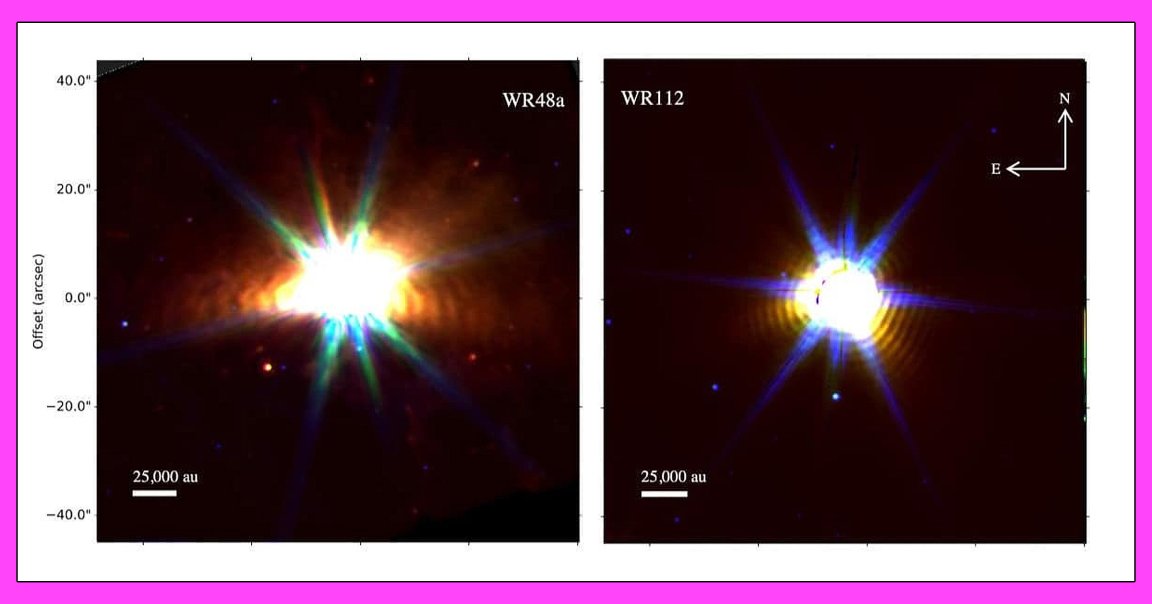
In brilliant new images, the James Webb Space Telescope has captured a rare glimpse at the gaseous “shrouds” that surround dying stars before they go supernova.
Known as Wolf-Rayet stars, which were discovered nearly 160 years ago by astronomers Charles Wolf and Georges Rayet at the Paris Observatory and named in their honor, these ancient stars are, as Space.com notes, surrounded by a “shroud” of cosmic dust that will eventually explode outward and lay the foundations for new stars.
These aged stars, as Space.com explains, have burned off most of their hydrogen. According to Noel Richardson, the leader of the team at Florida’s Embry-Riddle Aeronautical University that found four new Wolf-Rayet systems, the hydrogen burn-off signals that the stars are dying. As they do, powerful winds that pump out of the star system roughly every eight years create the concentric rings that make up these ghastly “shrouds.”
While these star systems’ existence has been known for the better part of two centuries, their dusty veils have only been observed once before, when the Webb telescope caught similar imagery around WR-140, an aging binary star system located about 5,000 light-years from Earth in the constellation Cygnus.
As explained in an Embry-Riddle statement, this discovery from Richardson and his students not only affirms that other Wolf-Rayet stars form those beautiful, dusty shrouds in the harsh void of space, but also could contribute to our understanding of the stellar life cycle.
Astronomer Ryan Lau — who works at the National Science Foundation’s NOIRLab in Tucson and helped Richardson’s team with the new Wolf-Rayet images — said in the university’s statement that he’s looking forward to seeing what else these strange shells can teach us.
“Where does this dust go?” Lau posited. “We want to learn what exactly the chemistry of this dust is. To do that, we need to take spectra to identify specific grain composition — the physical properties — to get an idea of the chemical contribution to the interstellar medium.”
To capture such poignant and awe-inspiring moments in the lives of star systems is already an incredible feat — and with the Webb telescope’s sophisticated equipment, there will likely be more where that came from.
More on Webb: James Webb Discovers First-Ever Exoplanet by Taking a Picture of It